8 XC Racer Set Up Tricks
We recently listed some tricks and hacks World Cup downhill mechanics use to eke out milliseconds of time on the race track, but what about on the XC side of things? While the downhill mechanics go for precision tuning, for cross country riders, it's much more about weight. Most of the tricks in this list are aimed at jettisoning as much weight as possible so the riders' power is focused on forward momentum. Whether those few grams actually matter is hard to say but if a racer believes they have the fastest bike, it goes a long way in their mind being set on the best result possible. Let's take a look at how they shave those all-important grams.
Custom dropper remotes
With gears, suspension lockouts, and now dropper post remotes all vying for space on XC racers' handlebars, sometimes mechanics have to get creative with controls to help their riders out in the race. This custom Reverb remote belongs to Kate Courtney who has had a remote rewired to fit underneath her grips. Kate has small hands so it means she has to move them less to operate the post and a squeeze of her fingers is all she needs to get her saddle where she wants it. Kate's Scott teammate Andri Frischknecht has taken this one step further. When Mike checked out his bike while filming for Humbled, he noticed that Andri has a button in both grips - one for shifting up, one for shifting down. Both buttons pushed together operate the dropper.
Removing Rotor Bolts
What does a rotor bolt weigh? Ten grams, maybe. For XC racers, that's ten grams too many and we've seen them taking out a couple of bolts in a pound-pinching bid for milliseconds on the track. While we wouldn't recommend you do this on your own bike, three or four bolts out of six are probably enough to secure a rotor over the course of a 75-minute race.
Removing dust caps on headsets
Speaking of weight saving, how about dust caps? Some of us probably take them off (or just lose them) on a tyre valve, but some XC racers will take them off their headsets too. One of the perks of being in a pro team is you get plenty of spares so if you do get your headset contaminated you can swap it out from race to race.
Taking the dust cap off also had an added benefit for Manuel Fumic, allowing him to slam his stem even lower than normal so he could get well over the front on the climbs aboard a retro-inspired Cannondale FSi.
Negative rise stems
Anyone who has been watching the track World Championships in Berlin at the moment will have seen the aero benefits of a low riding position but in XC it's far more about getting your weight over the front wheel to maintain traction on steep climbs. Some riders have specially built stems and others simply mount a riser stem upside down. we've even seen riders mount bars upside down to get a few millimeters lower on the front end.
Thumb rests
On longer climbs, riders like to switch their hand position to give their hands a rest. To give riders another option, TOGS (Thumb Over Grips System) allow them to bring their thumb above the bar, shift their weight, and still retain some control. Think of them as an alternative to bar ends but you can still use all your controls and you don't have to shift between hand positions.
Foam grips
Rather than the rubber lock-ons we see many racers use in downhill or enduro, a good number of cross country riders use foam grips as their main contact point. Like most things on this list, there are weight savings on offer here but for some riders, it's simply a comfort preference as they ride for over an hour each race over rough terrain on bikes that have far less suspension than your average trail bike.
Mud blocking foam
Any recess in a bike is an area mud can gather and bring with it some extra weight to have to lug around for the next hour of racing. To combat that, mechanics will fit foam in any area the mud can gather to keep it at bay. Yes, it's not pretty but can make a difference if you end up with a race such as Albstadt last year that ended up being sloppier than an explosion in an ice cream factory. The foam also keeps mud out of pivots and critical areas to keep suspension performing at its best.
No sealant in tyres
Sometimes riders will run tubeless setups with very little or no sealant in another effort to save weight. It's a gamble for riders as a single thorn could see you limping round to the tech zone for a wheel change and losing time but if you get lucky, especially on a course where punctures are unlikely, the time savings could be significant.
Custom dropper remotes
With gears, suspension lockouts, and now dropper post remotes all vying for space on XC racers' handlebars, sometimes mechanics have to get creative with controls to help their riders out in the race. This custom Reverb remote belongs to Kate Courtney who has had a remote rewired to fit underneath her grips. Kate has small hands so it means she has to move them less to operate the post and a squeeze of her fingers is all she needs to get her saddle where she wants it. Kate's Scott teammate Andri Frischknecht has taken this one step further. When Mike checked out his bike while filming for Humbled, he noticed that Andri has a button in both grips - one for shifting up, one for shifting down. Both buttons pushed together operate the dropper.
Removing Rotor Bolts
What does a rotor bolt weigh? Ten grams, maybe. For XC racers, that's ten grams too many and we've seen them taking out a couple of bolts in a pound-pinching bid for milliseconds on the track. While we wouldn't recommend you do this on your own bike, three or four bolts out of six are probably enough to secure a rotor over the course of a 75-minute race.
Removing dust caps on headsets
Speaking of weight saving, how about dust caps? Some of us probably take them off (or just lose them) on a tyre valve, but some XC racers will take them off their headsets too. One of the perks of being in a pro team is you get plenty of spares so if you do get your headset contaminated you can swap it out from race to race.
Taking the dust cap off also had an added benefit for Manuel Fumic, allowing him to slam his stem even lower than normal so he could get well over the front on the climbs aboard a retro-inspired Cannondale FSi.
Negative rise stems
Anyone who has been watching the track World Championships in Berlin at the moment will have seen the aero benefits of a low riding position but in XC it's far more about getting your weight over the front wheel to maintain traction on steep climbs. Some riders have specially built stems and others simply mount a riser stem upside down. we've even seen riders mount bars upside down to get a few millimeters lower on the front end.
Thumb rests
On longer climbs, riders like to switch their hand position to give their hands a rest. To give riders another option, TOGS (Thumb Over Grips System) allow them to bring their thumb above the bar, shift their weight, and still retain some control. Think of them as an alternative to bar ends but you can still use all your controls and you don't have to shift between hand positions.
Foam grips
Rather than the rubber lock-ons we see many racers use in downhill or enduro, a good number of cross country riders use foam grips as their main contact point. Like most things on this list, there are weight savings on offer here but for some riders, it's simply a comfort preference as they ride for over an hour each race over rough terrain on bikes that have far less suspension than your average trail bike.
Mud blocking foam
Any recess in a bike is an area mud can gather and bring with it some extra weight to have to lug around for the next hour of racing. To combat that, mechanics will fit foam in any area the mud can gather to keep it at bay. Yes, it's not pretty but can make a difference if you end up with a race such as Albstadt last year that ended up being sloppier than an explosion in an ice cream factory. The foam also keeps mud out of pivots and critical areas to keep suspension performing at its best.
No sealant in tyres
Sometimes riders will run tubeless setups with very little or no sealant in another effort to save weight. It's a gamble for riders as a single thorn could see you limping round to the tech zone for a wheel change and losing time but if you get lucky, especially on a course where punctures are unlikely, the time savings could be significant.
Author Info:
Must Read This Week
[UPDATED] Final Elite XC Results & Overall Standings from the Mairiporã XC World Cup 2024
41991 views
41991 views
Sign Up for the Pinkbike Newsletter - All the Biggest, Most Interesting Stories in your Inbox
PB Newsletter Signup
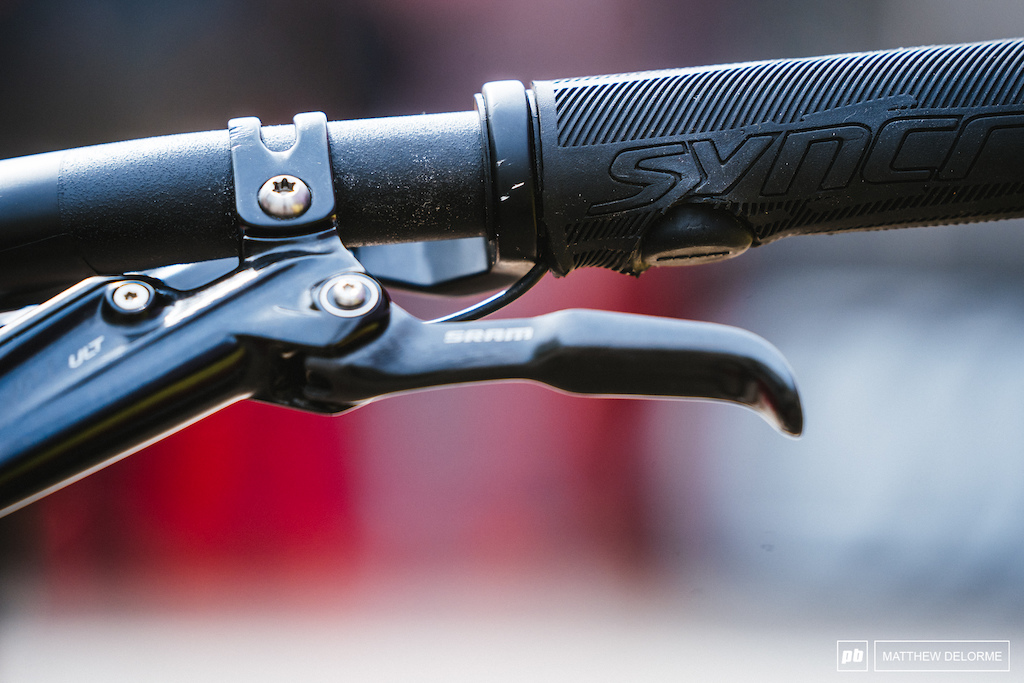
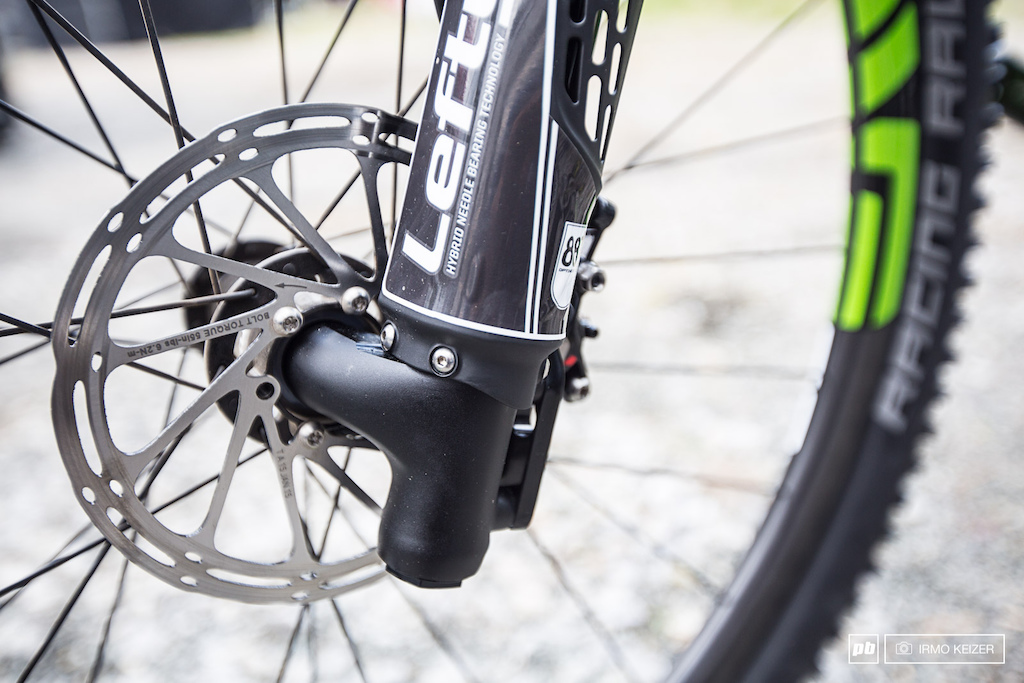


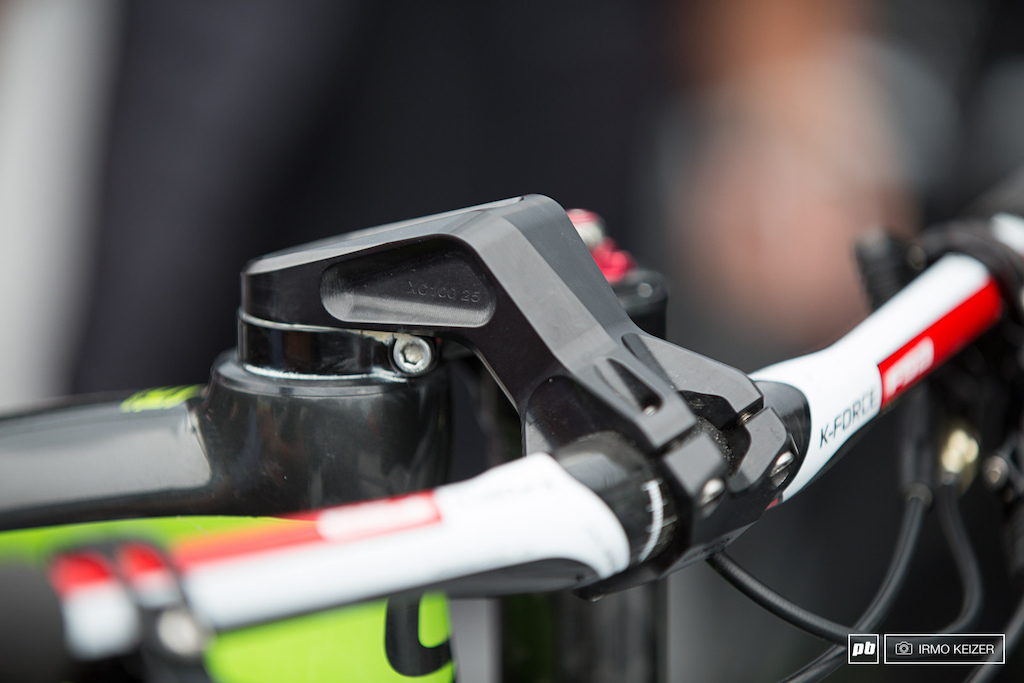

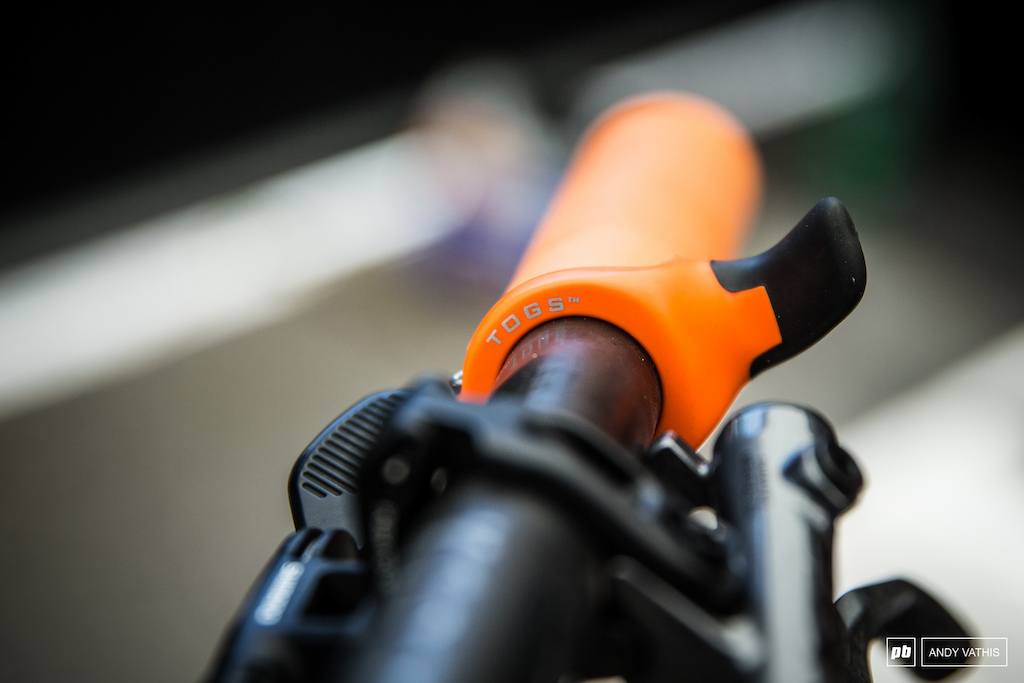

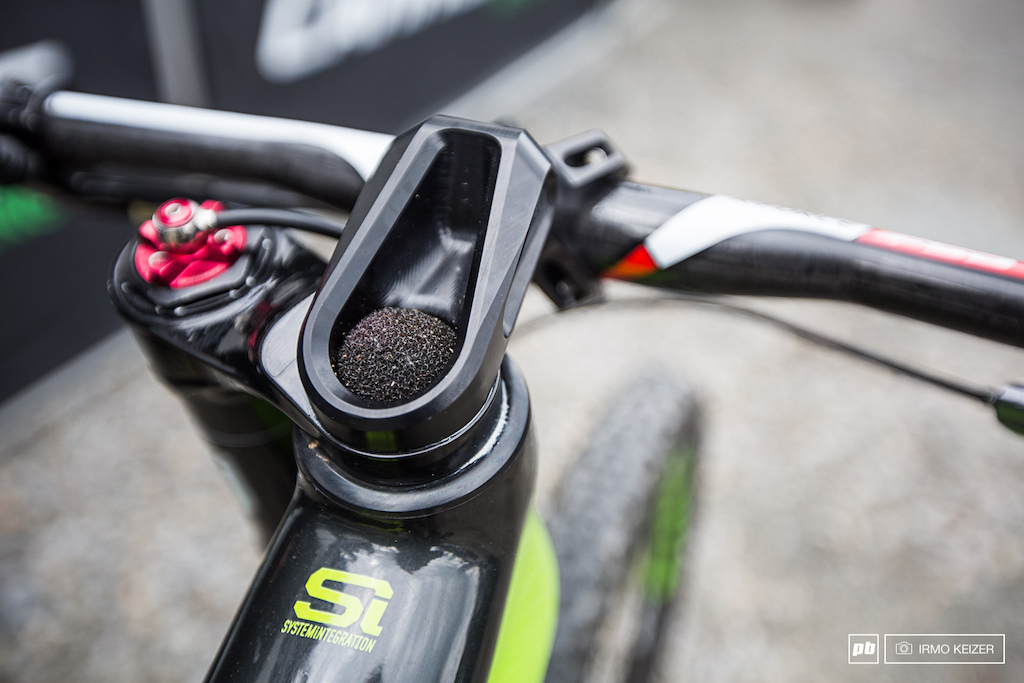


I even do it on my bike only because I'm too lazy to check my sealant and keep it topped up (60ml bottle of Stans in the hip pack sorts the problem)
I'd ride that.
www.amazon.com/Wenger-16999-Swiss-Knife-Giant/dp/B001DZTJRQ/ref=sr_1_1?keywords=swiss+army+knife&qid=1583773641&sr=8-1
I have had my hands come off nuts on top tube one foot off the pedal still rolling and trying to save it.
Don't move bro stay there in the water and keep telling yourself that its all a left wing conspiracy led by a teenage girl.
Completely agree. For racing, it could totally be worth the gamble.
I'll just mention that in my case it has not been intentional. I just have gone too long between checking sealant at times...
Whoever you heard that from doesn’t watch XC racing, they change out entire wheels not rotors. It’s way faster to remove an axle and slap a new wheel in than it is to remove the wheel, change the rotor and put the wheel back in.
Wheel swaps are almost never because a rotor went bad. Regardless even if that was the reason having 3 or 4 bolts instead of 6 would save you something like 10 seconds tops, as you should be using a drill motor to do that work quick.
What you are experiencing on the downhills is a different amount of momentum, which is a result of the speed AND the mass of an object. It means that even if you're going at the same speed as your heavier friends the same impact (for example hitting a root) is going to slow you down a little bit more than them. And that applies to basically anything, from car accidents to orogeny.
Spoiler: the balls land at the exact same time
Their bikes need to survive a week of practice with minor swaps (so that they lose as little practice time as possible, don't spend the day to carry the bike down the hill) - this is not the reality of an overcashed wanker who can't ride so instead of learning to, he finds it as a point of honor to build a sub 13.5kg Dh bike.
Back to momentum, the steeper the track the less it matters. Unlike XC, the acceleration is in abundance, 1kg out of total 85kg+ rider+bike will not make any bigger difference. What folks do on World Champs has more to do with superstition than practicality. Pros say it themselves.
However assuming the gained weight is non-productive (fat for example) you will be slower under powered accelerations (pedaling), roughly proportional to the weight gained as a fraction of total system mass (including bike and kit)
All this though is assuming you are riding a smooth surface, which you most likely is not. There are pros and cons to to being heavy over bumps, but being heavier here will most likely be an advantage since the suspension will work better when the undamped mass is a smaller fraction of total mass.
So from a mechanical perspective you'll most likely be better off being heavier when going downhill if there is little to no powered accelerations or the extra mass is productive (muscle and circulatory system), however carrying extra mass will put an added strain on the rider. Try imagine landing a huge drop with a heavy backpack. The extra work done by carrying the additional weight will also make the rider fatigue more which will also be a factor if significant rider input is needed.
@landscapeben I don't know if someone published some datas about mountain bikes, but there is many thing about the subject. there is weight limits in some winter sports for this reason.
there is two things you need to know
"where does the energy come from"
and
"where does the energy goes" (or more often "what part of the world is hotter now)
And then do the maths. kinetic energy, aerodynamic losses, tires losses, kinetic energy lost on roots,...
On a rough track, #1 loss of kinetic energy is from impacts with "square bumps" Rider weight does have some effect on it, but suspensions settings (including tire ans tire pressure in it) is the first thing to look at.
When climbing, your weight add up to the potential energy, and energy only comes from the rider input. But track isn't super smooth so there is still plenty of energy lost to the ground.
I see what you are saying but there is more to it than that I think. Perhaps greater rolling weight builds momentum faster overcoming friction more easily? I've seen the same thing happen with mates on smooth tarmac, they just seem to accelerate faster with less effort initially.
If you want to put the odds in your favour, you may want to understand what do what. Rider's skill is a huge factor, but it's not the only huge factor in the equation. You can't go faster than your brakes (or tires, or bike fit, or...) allow, no matter how much you're skilled.
If you want to adjust your time on track or predict who will win, Physics knows but doesn't help: there is a chaotic system so the best model you can run is "luck". There is still some trends you can guess but it stops here.
He said same dimensions but different weight. So given the same aero drag the heavier one lands first, when experiment is conducted in air. In a vacuum they land at the same time.
The force vector on an inclined plane is f=mass*9.8m/s^2*sin(angle of slope)
So yes, if friction and drag are ignored a heavier rider will accelerate faster.
There is no circular reasoning.
www.studyphysics.ca/newnotes/20/unit01_kinematicsdynamics/chp06_vectors/lesson25.htm
youtu.be/BWiHtiW8GSE
The fundamental fact that acceleration due to gravity is mass independent, and only depends on friction forces (air drag, rolling drag, etc) is so basic that it’s famous. You are quick to call people out on not knowing physics for knowing it so poorly yourself.
There’s a whole section in this wiki explaining why, it’s pretty simple once you see it written:
simple.m.wikipedia.org/wiki/Acceleration_due_to_gravity
So, F = Fg + Fd
also F = m * a, or a = F/m
Fg = m * a, so Fg scales linearly with mass
Fd doesn’t scale linearly with mass, and in this example we’ll say it doesn’t change at all between two identical bikes (4N for simplicity, in reality it would be some function of surface area, frontal area, tire pressure and contact patch, bearing friction, speed, wind...) one with a lead-filled down tube (12 kg vs 10 kg without the lead)
F for the normal bike = (10 kg * 9.8 m/s^2) + (-4 N) = 94 N
And the acceleration is then 94 N/ 10 kg = 9.40 m/s^2
F for the lead-laden bike = (12 kg * 9.8 m/s^2) + (-4 N) = 113.6 N
And the acceleration is then 113.6 N / 12 kg = 9.47 m/s^2
@clink83: I literally have a masters degree in physics and taught university labs in physics (including Newtonian mechanics)........ feel free to educate me with your expertise!
You and your small dog are both running at 15km/h (note you are not accelerating at all in that direction) and there is a small fence in front of you. The dog will probably run into the fence and come to complete stop, the fence provided enough force to completely bring that moving body to rest. You on the other hand will probably plow right through that fence given your larger inertia wasn’t as affected by the small force of the fence.
When riding downhill there are many things acting upon you that are related to ones mass, but gravitational acceleration is not one of them. This is why the gravitational constant for earth’s gravitational pull (g) is a constant value and can be used to calculate all sorts of stuff independent of the mass it is acting on.
DuDe You Are sO WrOnG
www.math.utah.edu/~eyre/rsbfaq/physics.html
Tell me how the relevant equations in the "why heavier skiers accelerate faster" section is wrong then. note the A = g*sin(theta) - mu*g*cos(theta) - (Cd*Ap*rho*V^2)/(2*m)
Why are you posting an equation and link that has both kinetic friction and drag? As already discussed mass does affect both drag and friction, but when you eliminate those (as you stated) you are left with gSin(x), something mass independent. I already know those things affect sliding bodies in the real world, but that is not at all what you said earlier. Posting random equations you find on google is only further showing your lack of knowledge on the subject. FWIW a bike doesn’t even have that same kinetic frictional force because when a tire is rolling along the coefficient of static friction is high enough to prevent most sliding(this is why we like sticky tires).
This misconception largely is due to how people perceive motion in their reference frame. If a heavier rider is pulling away it looks like he is accelerating away from us. But from a 3rd party view (Who also has a reference for how quickly an uninterrupted body should go) I see the bigger rider going closer to the speed he should and the smaller rider actually slowing down. The smaller rider still has the same gravitational acceleration working on him, but he also has retarding forces that are working opposite of him in a manner that proportionally affects him more.
In a bike rolling along a smooth road (with similar tires, frontal area etc) the big one in play is just air drag.
That would be accurate if you lived in a vacuum.
It was a great read on physics but in reality of riding a bike down the hill depending on countless variables, riders and bikes mass matters very little. Skill and Bike setup override all of this, even fitness to a great degree. None of us, given on world’s best bike amd engineer support Stands any chance against overweight Or undernourished Sam Hill on 2010 Sunday...
I also feel pretty safe saying I will not be implementing any of these on my all-trailduro bike. Particularly the "4 bolt" rotors, yikes!
I'm certain these XC race rigs are perfect for their application considering how often they are looked after and the parts are replaced.
I weight 70kg.
There are actually some bars that are designed as + or - 5mm rise.
Like these: us.ritcheylogic.com/us_en/superlogic-flat-5-handlebar
I have both a e-mtb (strictly for adventure and social rides) as well as an Enduro bike so I do get to add my piece to the e-mtb comment side. : - )
else, they'd shave their head for weight savings and stuff like that. wait, i gotta check some pics real fast...
Freefall=No-(9.8m/s)(time)
The force vector on an inclined plane is f=mass*9.8m/s^2*sin(angle of slope)
So yes, if friction and drag are ignored a heavier rider will accelerate faster.
I believe there was a recent video post of this on PB (retro racing video).
Also, if half the rotor bolts are about time savings, XC better start mandating 2 pit stops per race. I wanna see where this actually matters. Plus, you could have all new content centred around Pit Crew Olympics.
English is not my first language so what does that mean? Rear wheel grip or handling?
- hi! Are you a racer? Would you show me some moves?
- Really? What bike do you have?
- ehm... a mountain bike?
- pfff what are you stupid? What sort?
- it’s red, you know what I just, I think I...
- it’s fine! Sorry, I can show you some moves, we’ll look at your rotors first
- what does that mean?!
- I remove 2 bolts per rotor...
- Bye
- I haven’t even... bitch... she probably rubs ceterlock. Ridiculous
I finished an xc race a few years back in Kamloops looked down at my front tire and it was covered in cactus thorns. Could not believe my tire had held air.
I used that tire for the rest of the season without issues( other than a bloody hand when i removed the tire as many of the thorns were still poking through on the inside of the tire).
Note UST tires need a UST rim to seat properly etc.. and they are slightly heavier than a TR tire due to the sealing layer inside the tire.
Come on!
Placing those 10gr above your safety & well being is quite… stupid. The worst with this is that a bunch of stupid followers will do the same, just to copy their idols. Some things to consider:
-Getting off some bolts from the rotor compromises your safety (imagine is one of the rest, is a bit loose)
-Your safety is ABOVE ALL (never skip that. I still remember those hardcore racers, back then at the beginning of our sport, avoiding to wear a helmet, for those grams).
-Crashing may cost you your life (you may die or even worst be permanently & irreversible crippled). Even a light injury will be the cause to loose a couple of seasons. Does 10 gr worth it?
-Stupidity. Those parts are designed to be as light as it get. Your attempt to loose those… 10gr is placing this part OUTSIDE the very minimum of the safety parameters.
And last but not least:
-10gr is nothing! When you will (eventually) pass though that mud hole, then your bike will gain much more in weight.
Better consecrate your efforts to build your bike around a correct geometry according your ridding style and body size & trail both on stamina & technique avoiding of course all those harmful supplements that many athletes are consuming. Your health & well being is essential, its all about your life’s quality. Suffering for the rest of it, for just 10gr makes no sense.
Keep that irony to yourself!
If you have any objections on my saying, just be specific & answer with a valid argument.
XC is the best fun for me. But, certainly with nice downhill sections. It all boils down to wheels. S+an's P0dium SRD, VaIors, and Mav1c Cr0ssMaxx Pros on my bikes. All the lightest I could get at the time.
The older I get, the lighter I make my bikes. Ti bolts with blue lock everywhere, anything that can be carbon gets it, no remote lock-outs, etc. But, nothing is more noticeable than the rocket ship acceleration of light wheels and tires. Downhill suffers though with the loss of stability. Light wheels actually make climbing fun. And, I ride my hardtail the most
I went thru many trial & error tires that I had to return. Maxxi$, C0nti, Sc#walbe all claim weights and widths with little accuracy. Beefier R0ck Raz0rs seem to have the best weight/durability/rolling resistance ratio for all'round XC. Tho they are heavier than I'd like, but still extremely light for how heavy they look and ride. I need the durability for rocky creek gullies and rock gardens. The Aspens were the claimed width on my 29er, but, far narrower on 27.5. I use sub-recommendation 50ml of sealant. It needs to be checked/topped after 2 months. 22lbs fr 24 rear. Drops, but not many long jumps.
Tub0lito Tubo MTB spare tube with the T0peak micro rocket carbon on-board mini pump have never let me down.
The only heavy part is the dropper. But, I got the lightest on the market